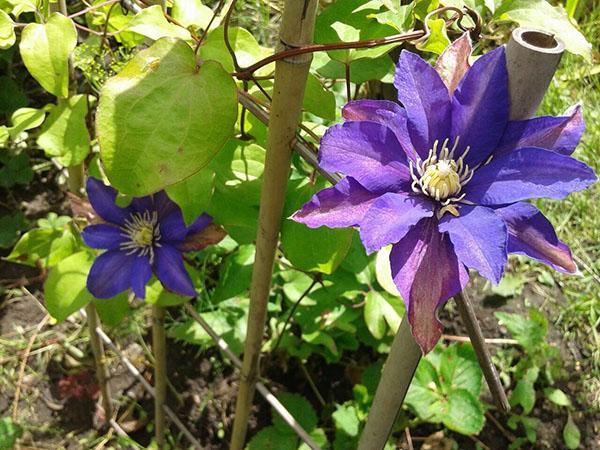Trouble happened - clematis does not bloom
 A garden arch made of these magnificent flowers is always the first to greet guests and hosts. A real tragedy for a summer resident happens when clematis does not bloom. There are many reasons for this. It is worth noting that the plant is most often affected by all kinds:
A garden arch made of these magnificent flowers is always the first to greet guests and hosts. A real tragedy for a summer resident happens when clematis does not bloom. There are many reasons for this. It is worth noting that the plant is most often affected by all kinds:
- fungi;
- bacteria;
- viruses.
Moreover, too long a bush stay in one place leads to depletion of the soil. In some cases, due to weather conditions, the land becomes acidic, which negatively affects the culture. Drafts, sudden changes in temperature and other cataclysms can also become an unfavorable factor for it. What to do in such cases?
When clematis blooms again

- Pruning the vines. There are several ways: low, medium and high. In this case, the first option is used, leaving from 3 to 7 kidneys. This will help the culture activate growth. And as a result, clematis will bloom again.
- Dig in the vine. The remaining shoot is pressed to the ground and sprinkled with loose soil. Being in this position, the branch will take out additional roots. The diameter of the bush will increase several times.
- Apply fertilizer. Several different complexes are used. First, the bed is covered with organic matter - three-year-old humus. Then, under each bush, a nitrogen-containing top dressing, urea is introduced (up to 20-30 g for each rhizome).
When applying chicken manure, you should be very careful. It is highly concentrated and can completely destroy the plant. Therefore, a few pellets will suffice.
After such manipulations, a nest is formed from the vines. Next, the bundle is sprinkled with soil so that it is not visible. As soon as the spring rains pass clematis come to life again. The bush will begin to quickly gain green mass. During this period, the foliage is treated with a fungicide. Many people use a solution of carbamide or copper sulfate. Thanks to such manipulations, the development of the kidneys is delayed. As a result, the crop will not be affected by late frosts.
In the first half of summer, several more dressings are carried out with the help of phosphorus and potassium preparations, which will help clematis bloom luxuriantly. Cut branches can be rooted by placing them in water. After a while, they will take root. Young seedlings are planted somewhere in the country.